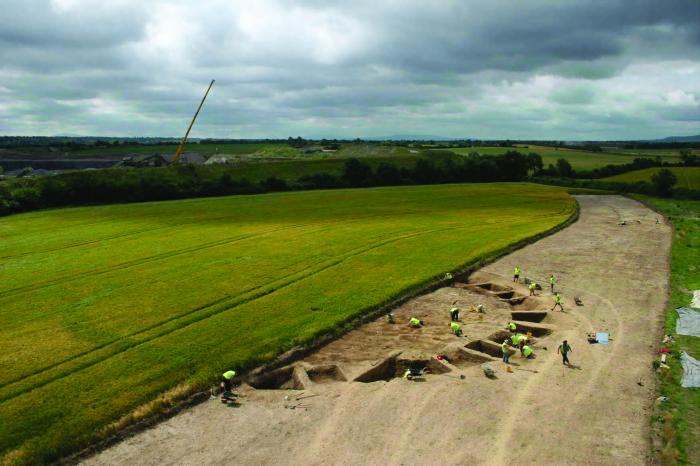StoryMaps
StoryMaps combine the latest mapping technology with narrative text, images, and multimedia content to tell compelling stories. They are an ideal tool for communicating archaeological discoveries and have been used on a number of TII projects.
Good Land Makes Good Stories: Archaeological Discoveries from the N80 Maidenhead Road Realignment Scheme, Co. Laois
View Storymap
Past Lifeways in the Irish Midlands: The Archaeology of the N52 Cloghan to Billistown Road Improvement Scheme in County Westmeath
View Storymap
Forging a Future: Tales of Archaeological Discovery Along the N73 Road Corridor in North County Cork, Ireland
View Storymap
From Milltown’s First Farmers to Landed Gentry: The Archaeology of the N70 Kilderry Bends Road Improvement Scheme in County Kerry
View Storymap
Living Between the Lakes: The Archaeology of the N55 Road (Corduff to South of Killydoon Section A, County Cavan)
View Storymap
The Archaeology of the N22 Baile Bhuirne to Macroom Road Development, in West Cork, Ireland
View Storymap
Between the Lines: The Archaeology of Luas Cross City
In August 2017, The Irish Times reported on the cultural heritage aspects of the Luas Cross City project in Dublin city, in an article entitled 'The Lost History of Dublin Uncovered by Luas Works'. This article was complemented by the creation of the 'Between the Lines: The Archaeology of Luas Cross City' Story Map, which offered readers a novel means to engage further with the discoveries that had been reported on.
An Archaeological Journey Along the Carlow Bypass
Fifty-seven archaeological excavations were undertaken by Rubicon Heritage Services along the route of the M9 Carlow Bypass on behalf of TII (formerly the National Roads Authority) and Kildare County Council. Rubicon Heritage Services created this Story Map in 2015 examining some of the discoveries, looking at them townland by townland, travelling from south to north, and exploring some of the specialist techniques used during post-excavation analysis.

The creation of this webpage was an initiative of the TII Heritage Week Project 2020.
Last updated 07/07/2023.
Note: In order to allow the use of multimedia content and thus access all of the content on this webpage you will need to update your cookie consents to accept all cookies.